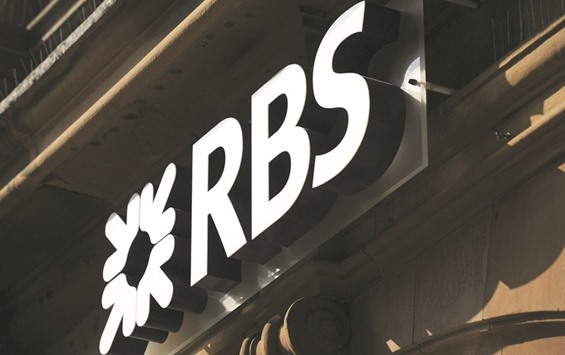Royal Bank of Scotland agreed to pay $85mn to settle allegations it attempted to manipulate the ISDAfix interest-rate benchmark that’s tied to the $544tn private derivatives market, the US Commodity Futures Trading Commission said.
That brings total fines so far for attempted manipulation of ISDAfix to $570mn as RBS joins Barclays, Citigroup and Goldman Sachs Group in settling CFTC cases. Though arcane, ISDAfix plays an important role in global financial markets, helping determine the value of interest-rate swaps, securitised bonds and options on swap contracts. The cases have also included attempted manipulation of Treasuries because the price of US debt influenced the daily calculation of ISDAfix.
To buttress its case, the CFTC cited electronic communications from traders at RBS, who discussed how they moved the benchmark around 11 am New York time, when ISDAfix’s value was set. “As one RBS employee explained, ‘the way to move ISDAfix is to hit or lift spreads on the screen, and do the opposite in tsy, b/c that is how the rate is derived,’” the CFTC said in its statement on Friday. “Tsy” is shorthand for US Treasuries.
RBS neither admitted to nor denied the allegations. “This is an example of past misconduct that has no place at RBS and we strongly condemn these actions,” Ross McEwan, RBS chief executive officer, said in an e-mailed statement. “These findings make for uncomfortable reading and we have already taken significant steps to make sure this kind of behaviour cannot happen again. The culture and structure of RBS has changed dramatically in recent years; I’m pleased we can put this issue behind us and concentrate on the important job of building a bank that is fully focused on the best interests of its customers.”
All of the CFTC cases related to ISDAfix have been for attempted manipulation, as the regulator hasn’t shown that banks and brokers actually changed the rate through their trading.
ISDAfix might not be a household word, but its impact on global markets is huge: The benchmark helps settle trades in the $311tn market for interest-rate swaps and the $35tn market for options on swaps. Banks use it to set coupons paid for bonds tied to commercial real estate. Fluctuations in ISDAfix help determine the performance of structured notes bought by wealthy individuals and the amounts some states pay on pension annuities.
Wall Street’s largest dealers sought to change the value of the swaps because the ISDAfix rate sets prices for the other derivatives, known as swaptions, which are used by investment firms, a person familiar with the investigation said in 2013. ISDAfix sets the price on an expiring swaption contract, so moving the rate even a tiny amount can save a bank millions of dollars.
Another RBS trader joked about the attempted manipulation in 2007 on the day the CFTC charged Amaranth Advisers with attempted manipulation of the natural gas market, the regulator said in its notice on Friday. The RBS employee changed a news story to replace Amaranth with the inter-dealer broker where the ISDAfix trades were handled and then e-mailed the story to colleagues, the CFTC said.
The broker was ICAP, with its Jersey City, New Jersey brokering desk that was central to how the ISDAfix rate was set. Known in the industry as “Treasure Island” for how well the brokers were paid, the desk collected the bank submissions that were used to set the US dollar ISDAfix.
Bloomberg News, citing a person with knowledge of the matter, in 2013 was the first to report that the CFTC found evidence traders at Wall Street banks instructed ICAP brokers to buy or sell as many interest-rate swaps as necessary to rig ISDAfix by moving it to a predetermined level. Doing so helped banks reap millions of dollars in trading profits, costing companies and pension funds, the person said at the time.

A signage is displayed at a branch of the Royal Bank of Scotland in Edinburgh. RBS agreed to pay $85mn to settle allegations it attempted to manipulate the ISDAfix interest-rate benchmark that’s tied to the $544tn private derivatives market.


